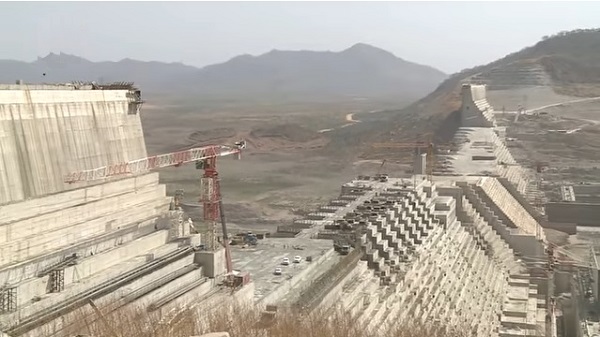
As its name suggests, the Grand Ethiopian Renaissance Damis not just an infrastructure project, but was also conceived as a statement about Ethiopia’s vision for and commitment to its own development.
By J. Peter Pham (Atlantic Council)
The April 2 anniversary of the laying of the foundation stone of the Grand Ethiopian Renaissance Dam (GERD) in 2011 passed largely unremarked amid the cascade of momentous news coming recently from Ethiopia, including several years of unrest, the sudden release of thousands of detainees in mid-February, the resignation of the prime minister one day later, the declaration of a state of emergency the day after that, as well as the ensuing intense deliberations within the governing Ethiopian People’s Revolutionary Democratic Front, culminating in the election of a new coalition chairman and his swearing-in this week as prime minister, the first such constitutional handover in the millennial history of the Ethiopian state. Yet it would not be an exaggeration to say that, as the GERD approaches completion, its strategic geopolitical and socioeconomic impact on Ethiopia and, indeed, the entire Northeast Africa region may prove greater than of any of the developments that have lately filled the news.
As its name suggests, the GERD is not just an infrastructure project, but was also conceived as a statement about Ethiopia’s vision for and commitment to its own development. From the onset, the construction was financed by neither international finance institutions nor donor countries, but by bonds purchased by Ethiopians at home and abroad. The project itself is directly managed by Ethiopian Electric Power, with the Italian construction firm of Salini Impregilo and the Metals and Engineering Corporation of Ethiopia as the two main contractors and a Franco-Italian joint venture of Coyne et Bellier and ELC Electroconsult retained as consultants. As I learned during a visit last month to the site in the Benishangul-Gumuz region of western Ethiopia near the border with Sudan, of the roughly 9,000 people working on the project, only about 250 are expatriates, hailing from some two dozen countries—the overwhelming majority of those employed are Ethiopians, including Engineer Semegnew Bekele, the overall manager, who was my guide.
Read the complete story at Atlantic Council
